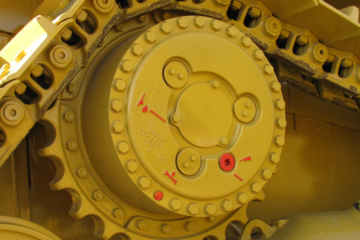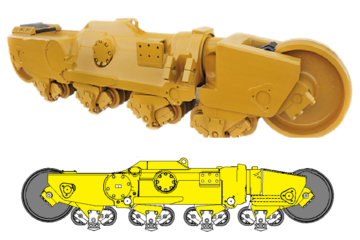Every Undercarriage has a budget or target life it is expected to live within a specific environment. This budget can be affected by
- Changes to the specific Environment
- Weather patterns for the year
- The Inspection regime identifying intervention maintenance required
Budgets however perform a far more important role. They identify which machines undercarriage components are falling short of the required targets. When these components fall short of their expected life, this represent lost value, and this loss can be amplified when the component is a key component in the undercarriage system. Take for example, a bush which is wearing quicker, possible due to a tight chain and is close to 100% worn while the other components of the system have not yet achieved 75% wear. The bush not achieving target mean that all the other components will have to be scrapped once the bush fails, and they might only have achieved 80% wear leaving a further 20% of life left. This means 20% of their wear material is scrapped.
Budgets for component lives need to be established using a Data Set built up from successive components inspected regularly in a specific jobsite environment. The more data that can be collected, the more meaningful the component budgets and the more they can be relied on as a benchmark. Without these benchmarks, there is no way of telling whether your undercarriage components are under or over performing.
Regular inspections of your undercarriage components allows a meaningful data set to be created so that component budgets can be used to identify underperforming undercarriage components on machines



0 Comments